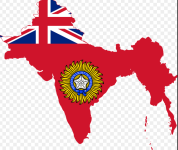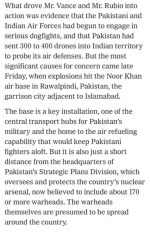View attachment 2537905
Islamabad has presented a well-reasoned breakdown of the recent hour-long aerial clash involving more than 130 aircraft and claimed elimination of five Indian Air Force fighters Pakistan Air Force has finalized its claim about downing Indian aircraft in the largest-ever fighter aircraft dogfight that took place on the night of May 7, 2025. During a press briefing, the officials announced that five Indian fighter jets and one UAV had been shot down. According to the statement, one MiG-29, one Su-30MKI, and as many as three Rafales were shot down. The Pakistanis provided the coordinates of the crash sites, Indian pilots' conversations, radar data for confirmation, and also shared some insights into the aspects of this unprecedented battle. It's worth noting that, although the information provided by the Pakistani side, including the coordinates of the crash sites, looks quite convincing, the only independently confirmed loss was of one Indian Air Force Rafale with its tail number identified. That said, satellite imagery of the announced coordinates may show traces of the fighter jets' crash and reveal the truth.
For example, it was revealed that more than 130 aircraft were involved in the skirmish at distances Beyond Visual Range (BVR), with the Indian Air Force holding numerical superiority. The released video shows that the front of the airborne exchange stretched for almost 750 km from the highlands of Kashmir in the north to the Thar Desert in the south. Pakistani military officers displayed an almost step-by-step reconstruction of the battle, which began around midnight May 7. During the first phase, India raised 60 aircraft, including 14 Rafale fighter jets, and gradually increased the total number to 72 throughout the operation. Moreover, the Pakistanis declare that all of the enemies were identified almost immediately after takeoff.
Pakistan, in turn, engaged 42 fighters in counterattack, including JF-17, F-16 and J-10 jets. Independent sources credit one of the J-10s with shooting down the Indian Rafale — the spokesman confirmed the use of PL-15 long-range air-to-air missile for this notable achievement.
The infographic separately indicates the role of AEW&CS aircraft; here, by the way, Pakistan has an advantage (14 in PAF service vs. 8 in India's). The press officer stated that the air battle broke out only after the Indians launched air-to-ground missiles.
The main goal on the PAF side was to shoot down the Rafale — the most combat-capable among Indian aircraft. The clash lasted for more than an hour. Most of the Indian aircraft were shot down over Kashmir: two Rafales, one MiG-29 and one Su-30MKI. Another Indian Rafale was shot down in the state of Punjab, 350 km to the south. All the downed aircraft fell on Indian territory. The Pakistani losses are not specified.
https://en.defence-ua.com/events/pa...ki_and_rafale_takedown_in_dogfight-14463.html
Um, Pakistan was playing defense, no???
And India was striking target on the ground while simultaneously dealing with threats from air to air and ground based missiles, while Pakistan was solely focused on India’s fighter jets, no???
See also; Ukraine junking a fuckton MOAR of Russia’s toys than Ukraine is losing.
I wouldn’t read too much into the Pakistani "victory" (and the details of that "victory" are still pretty sketchy).


